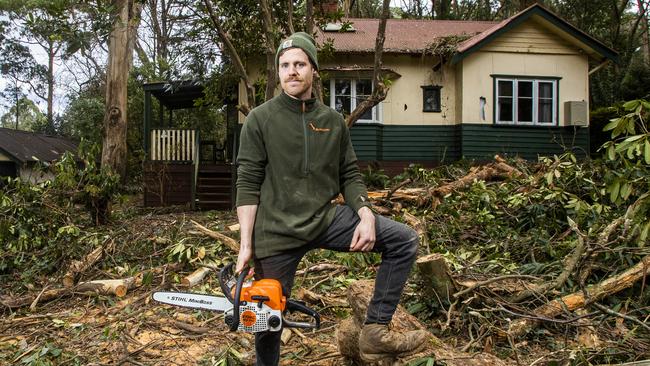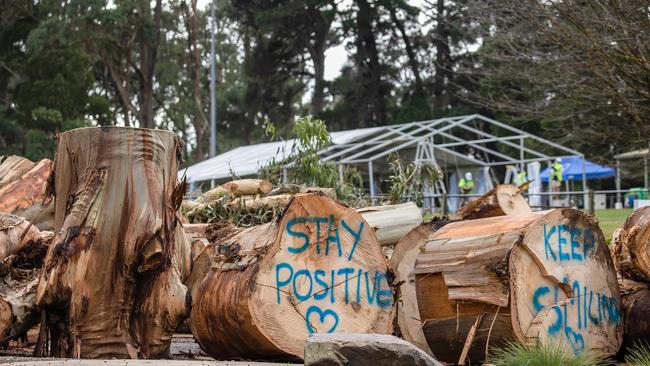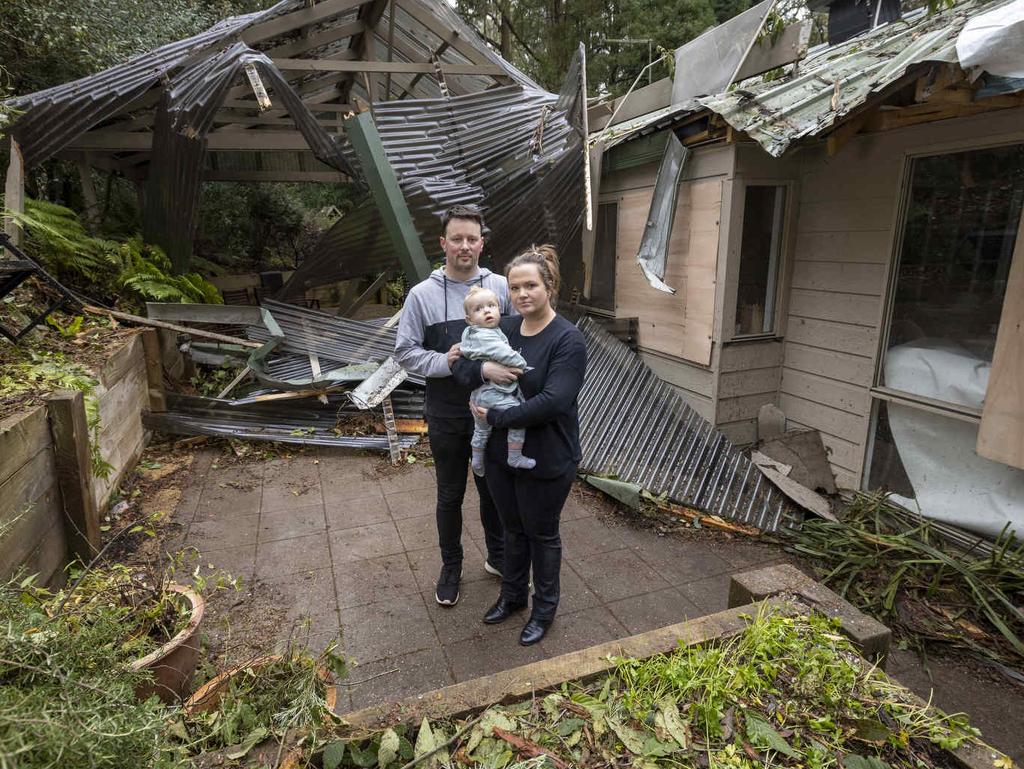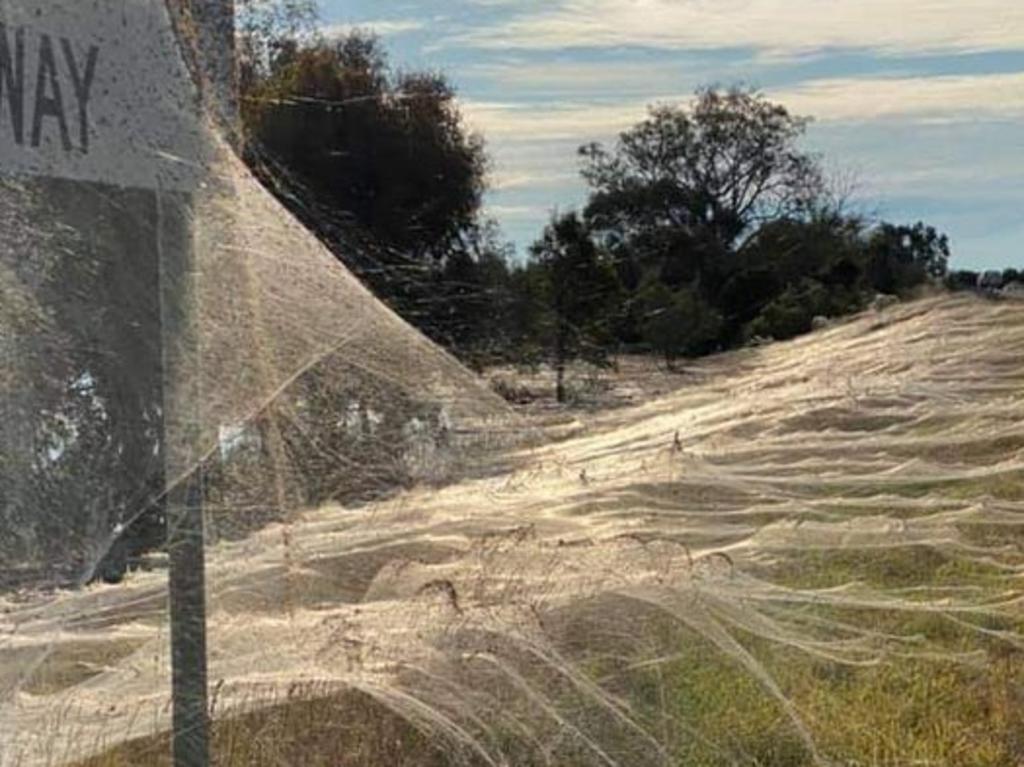Storm-hit Victorians to go three weeks without power, ADF called in
Devastating storms have wreaked havoc across Victoria – but one locality in the state’s east is worse off than most others.

Thousands of Victorians will endure freezing winter conditions for weeks without electricity in the wake of devastating storms.
About 7000 properties are without power more than a week after storms and flooding hit the state, and at least 3000 in the Dandenong Ranges — about 45km east of Melbourne — are expected to be without electricity until July 10. Support payments of up to $1680 a week for a maximum of three weeks will be offered to households without power, after AusNet apologised for underestimating “the extent of the damage and scale of recovery”.
Two trees fell onto Aaron Brown’s property in Olinda during the storm on Wednesday of last week, one of which struck his bedroom and left a hole in the front of his house while he slept.
“When these things come down they literally sound like bombs going off. It sounded like a … war zone,” the 30-year-old said.
On the night of the storm, Mr Brown said fog rolled in, followed by rain, and visibility dropped to zero.
“We just huddled in the living room waiting for it to pass over because that’s all we could do,” he said. “Obviously in the pitch black because there was no power.”
He is one of the thousands of residents across Ferny Creek, Kalorama, Mount Dandenong, Olinda, Sassafras, Sherbrooke, The Basin, Tremont and Upwey who have been told power will not return for three weeks.
Despite the near-freezing conditions and tangle of trees he has been working to remove from his front yard, Mr Brown said he considered himself lucky.
“At the end of the day we are all smiles. We woke up, our house was fine, we are fine.”
Customers in the worst affected areas of The Dandenongs should prepare to be without power for the next 3 weeks. The initial estimates provided to customers were wrong. We are deeply sorry. We now understand the extent of the damage and scale of the recovery and repair ahead. 1/3
— AusNet Services (@AusNetServices) June 16, 2021

Federal Emergency Management Minister David Littleproud said the federal government made several offers to provide ADF assistance to help with clean-up efforts. But Victoria’s first request, for just five ADF planners, didn’t come in until late on Wednesday night.
“They will help in the planning and we have made numerous attempts to encourage the Victorian government to take up the offer of ADF support,” Mr Littleproud told 3AW. “The reality is the states have to make that request. We stand ready and poised to get out there and get moving.”
At a later press conference in Canberra, Mr Littleproud said Victoria first made a request for ADF personnel at 9pm on Wednesday.
“We had Emergency Management Australia and my department in close contact with the Victorian government from the very start of this disaster,” he said.
“It is longstanding arrangements that both the Victorian state government and any other state government around this country know that the ADF is there upon request.
“We only received the first tasking request last night after 9pm. It was approved immediately and those ADF personnel were deployed immediately this morning.
“Emergency Management Australia had actively encouraged the Victorian government to take up those offers since they were able to make those initial assessments in the disaster, and we continue to encourage them to make those applications.”
On Thursday Acting Premier James Merlino said the government’s initial request for ADF help would be followed by further calls in the coming days.
“In any disaster there is the immediate period of life saving. Then you have the … period of assessing the damage and working out what you need to recover,” he said. “Everything that can be possibly done has been done. We have got crews working 24 hours a day, seven days a week, clearing as much damage and supporting communities.”

As well, a state of emergency was declared after flooding at the Yallourn power station – about 145km southeast of Melbourne – caused cracks in the banks of the Morwell River Diversion and the wall of a mine.
There is a real risk the mine, which provides coal for 22 per cent of the state’s power, could flood after last week’s torrential rain.
The June 9 storms hit Gippsland, metropolitan Melbourne, eastern Melbourne and central Victoria. Victoria’s State Emergency Service recorded it busiest period on record.
Owner of Lochiel luxury accommodation in Olinda, Alan Olney, faced with living off a generator until July 10 and despite news three of five cottages had been pummelled by falling trees, said the “waterworks” had not yet arrived.
“We have been booked out for … some weeks prior to the Covid lockdown. And now we’re still booked out, but we have to ring everybody and tell them I’m sorry,” the 71-year-old said.
“We will get through it. We will rise above it. We are hills people, we’re strong.”






To join the conversation, please log in. Don't have an account? Register
Join the conversation, you are commenting as Logout